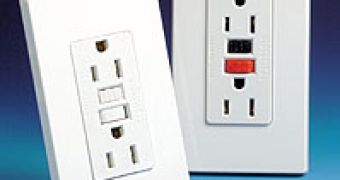Ground Fault Circuit Interrupters or Residual Current Circuit Breakers are electrical wiring devices used as protection against electrical currents that are not balanced between the neutral conductor and the phase. These situations usually occur when current is being leaked through the body of a living being, from the phase conductor to another grounding without passing through the neutral conductor, such as in the case of accidental shocks. When the GFCI detects that an imbalance in the current has occurred, it automatically cuts off the electrical current supply.
A GFCI device basically monitors the current between the two conductors through a differential current transformer, which can be used as a protection switch. The current transformer constantly guards the current difference between the two conductors, which must always be equal to zero. In case the difference is not null, the device evaluates the situation and if it finds it anomalous the current is cut off.
Most of the GFCI devices in the United States are designed to cut off any current differences between 4 and 6 milliAmpers experienced for a time period of up to 25 milliseconds, while in Europe GFCIs are generally set to cut off any current between 10 to 100 milliAmpers. Now you're probably wondering what circuit breakers are used for, since they operate much in the same way as GFCIs.
It's true, both the circuit breakers and the GFCI devices basically perform the same task, but for a totally different reason. While circuit breakers are mostly used to protect the electrical wiring and any electrical devices, GFCIs are specially calibrated to prevent electrocution, to limit the electrical current that passes through the body and the time in which the heart might go into ventricular fibrillation.
Additionally, GFCIs are not designed to protect against short circuits or voluntary shocking by passing current from the phase conductor through the body and to the neutral conductor.

 14 DAY TRIAL //
14 DAY TRIAL //